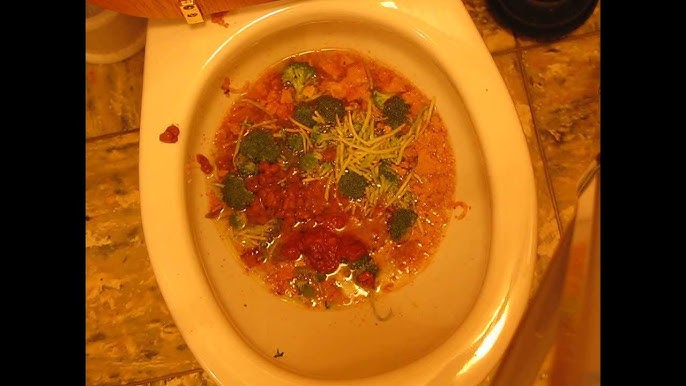Is it Sensible to Flush Food in the Toilet?
Is it Sensible to Flush Food in the Toilet?
Blog Article
What are your insights and beliefs about Is it safe to flush food (especially rice) down the toilet??

Intro
Lots of people are typically faced with the problem of what to do with food waste, especially when it concerns leftovers or scraps. One usual question that arises is whether it's all right to purge food down the toilet. In this short article, we'll explore the reasons people might take into consideration purging food, the repercussions of doing so, and different methods for correct disposal.
Reasons that people might consider flushing food
Absence of awareness
Some individuals might not recognize the possible damage triggered by purging food down the bathroom. They might incorrectly believe that it's a safe technique.
Comfort
Purging food down the toilet might appear like a quick and very easy solution to getting rid of unwanted scraps, specifically when there's no neighboring trash can available.
Idleness
Sometimes, people may merely select to flush food out of large laziness, without taking into consideration the consequences of their actions.
Consequences of flushing food down the commode
Environmental effect
Food waste that winds up in waterways can add to air pollution and harm water ecological communities. Additionally, the water used to flush food can strain water resources.
Plumbing concerns
Purging food can result in stopped up pipes and drains, creating expensive plumbing repair work and aggravations.
Sorts of food that must not be flushed
Fibrous foods
Foods with coarse textures such as celery or corn husks can obtain tangled in pipelines and cause obstructions.
Starchy foods
Starchy foods like pasta and rice can soak up water and swell, leading to obstructions in pipelines.
Oils and fats
Greasy foods like bacon or food preparation oils should never ever be flushed down the bathroom as they can strengthen and trigger blockages.
Appropriate disposal approaches for food waste
Utilizing a waste disposal unit
For homes geared up with garbage disposals, food scraps can be ground up and flushed through the plumbing system. Nonetheless, not all foods appropriate for disposal in this fashion.
Recycling
Particular food packaging products can be reused, lowering waste and lessening environmental impact.
Composting
Composting is a green method to dispose of food waste. Organic products can be composted and utilized to enhance soil for gardening.
The significance of proper waste management
Minimizing ecological harm
Correct waste monitoring techniques, such as composting and recycling, aid lessen pollution and preserve natural resources for future generations.
Securing pipes systems
By avoiding the method of flushing food down the commode, home owners can stop costly plumbing repair services and keep the integrity of their pipes systems.
Conclusion
Finally, while it might be alluring to purge food down the bathroom for convenience, it is very important to comprehend the prospective repercussions of this action. By taking on appropriate waste management techniques and taking care of food waste properly, individuals can contribute to much healthier plumbing systems and a cleaner atmosphere for all.
FLUSH FOOD DOWN THE TOILET?
FLUSHING FOOD CAN CAUSE BLOCKED DRAINS IN YOUR HOME
All of the plumbing fixtures in your home are connected to the same sewer pipe outside of your home. This outdoor sewer pipe is responsible for transporting all the wastewater from your home to the Council sewer mains. Even small pieces of food that go down the kitchen sink can cause problems for your sewer. It should therefore be obvious that flushing larger bits of food, such as meat, risks a clog in either the toilet itself or the sewer pipes. Flushing greasy food is even more problematic because oil coagulates when it cools, coating the interior lining of your pipes.
THE TOILET IS NOT A BIN
Food isn’t the only thing that people shouldn’t be flushing down the toilet. People use the toilet to dispose of all kinds of things such as tampons, makeup wipes, dental floss, kitty litter and even underwear. Water goes to great lengths to educate residents about the high costs and stress placed on wastewater treatment systems simply from people flushing the wrong stuff down the toilet. It costs taxpayers millions of dollars each year, and homeowners thousands in blocked drain repairs.
FLUSHING FOOD IS A WASTE OF WATER
Flushing food is a waste of our most precious resource - water. In June this year Level 1 water restrictions were introduced to protect water supply from drought conditions. Much of New South Wales continues to be affected by prolonged drought with recent figures revealing up to 97 per cent of the state remains in drought. Depending on whether you have a single or dual flush toilet, every single flush uses between five and 11 litres of water. In the current climate this is a huge amount of water to be wasting on flushing food that should be placed in the bin (or better yet, the compost).
https://www.jabplumbingsolutions.com.au/blog/can-you-flush-food-down-the-toilet

We had been made aware of that write-up on Flushing Food Down the Toilet? through an acquaintance on another web blog. Enjoyed our blog posting? Please quickly share it. Help somebody else discover it. I praise you for being here. Come back soon.
This Resource Report this page